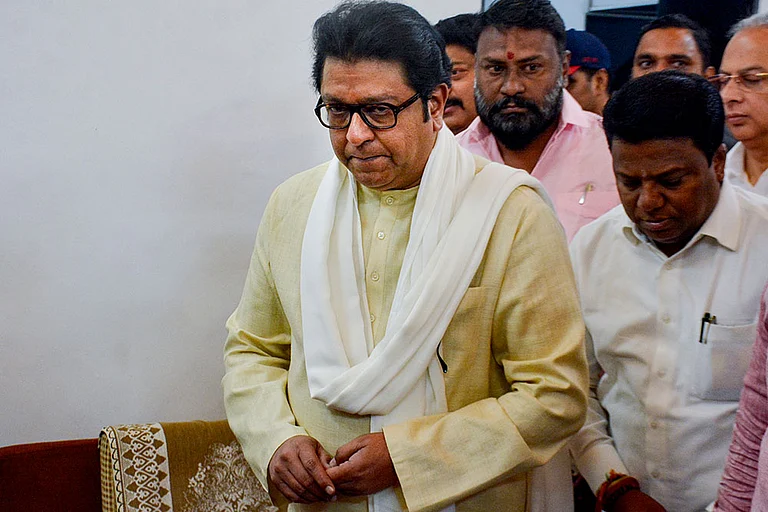Some year after 2070
Finally, after many years, there was some positive news. The much-anticipated product invented by Dr. Amit Rastogi of India was soon going to be launched across the world. Dr. Rastogi had spent years in research, and after testing endless prototypes, the final version of the product was ready. With all clearances in place, it went into mass production, and the announcement was made that within three months, the miracle product would be available in the markets for worldwide distribution.
Happiness had become the most elusive and sought-after ‘thing’ in the world. For the past five years, a deadly pandemic even more life-threatening than COVID-19 of the 2020s had plagued the entire human race. With indefinite periods of lockdown and almost zilch social life, the majority of our species was experiencing frequent bouts of depression and anxiety. Deaths and suicides had become quotidian news, and the possibility of a vaccine being developed anytime soon seemed unlikely.
This pandemic was merely the tipping point of the humanitarian crisis. The process of mental degeneration and disintegration of society had been underway for decades. The perils of modern living such as hyper-consumerism, excessive materialism, and individualism had significantly contributed towards human beings feeling more isolated and lonelier. Moreover, the devastating impacts of climate change were also threatening to push humankind to the brink of extinction. Already, many coastal lands had become submerged in water, resulting in the mass uprooting of the human population and their consequent migration to higher altitude locations. It was as if the doomsday scenarios of sci-fi movies had turned into reality.
Amidst all this gloom and doom, the news of Dr. Rastogi’s invention served as a ray of hope for humankind. It was an electronic machine in the form of a skull cap that could recall vivid positive memories from one’s past and help the individual re-experience those pleasant feelings in the body. The product was named Happiness. Though it seemed ironic at first that a tangible product was being named after an intangible emotion, happiness too was being commodified just like any saleable product!
The eagerly awaited day arrived, and Happiness was going to hit the stands. Governments across the world relaxed lockdown rules, especially for the revolutionary product that would bring smiles back to the grim faces of people. Bookings on e-commerce websites witnessed unprecedented traffic, and retail stores across the world were prepping up for miles-long queues of desperate people. There were dozens of security personnel at every store to control the impending mob frenzy. Even the Apple iPhones had never attracted such massive crowds and mass hysteria in the past. The scenario felt like the pandemic had ceased to exist, and suddenly nobody seemed to worry about it anymore. As expected, within hours of the launch, the entire supply of the dream product got exhausted despite the one-person-one machine rule at the time of purchase. There were a few who ‘managed’ to procure more than one item and were selling them in the black market for double to triple the price.
All manufacturing units producing this wonder machine were operating at peak capacity as stocks had to be continuously replenished at every store and warehousing facility. Most stores were running out of stock in no time as the demand was going through the roof. Even the major e-commerce websites were experiencing frequent crashing of their servers due to the unbearable web traffic. The product was reasonably priced, equivalent to the price of a low-end smartphone, making it affordable for most people. Those who could not afford the product were selling off their household items or taking loans just to get a piece of Happiness.
Dr. Rastogi's machine served as a miracle for curing depression, anxiety, and stress. The world was becoming a happier place with people reliving their pleasurable past as and when they desired. Incidentally, the pandemic started retreating, and new cases of people getting infected with the virus began declining with each passing day. Lockdowns were being lifted in various parts of the globe, and social life was coming back to normalcy. In the meantime, Dr. Rastogi was awarded the Nobel Prize in Physiology or Medicine for his incredible invention and was invited to attend the award function at the Nobel Assembly at Karolinska Institutet in Stockholm, Sweden. He decided to take his lovely wife Seema along for the event. They both planned to travel around Europe after the award ceremony and enjoy a nice vacation after ages.
Dr. Rastogi and Seema had been married for more than 20 years and were still madly in love with each other. They first met in college, where Dr. Rastogi was a batch senior. Since Dr. Rastogi was one of the brightest scholars on campus, many juniors and peers used to seek his help with study notes. That is how even Seema got acquainted with him. With time, their friendship grew and later blossomed into love. They both decided to get married after Seema finished her course. Dr. Rastogi had started his medical practice in a government hospital by then. But Seema's father was dead against the marriage as Dr. Rastogi was an orphan. He wished to marry off his daughter into a ‘respectable’ family. It didn't impress him that a boy raised in an orphanage had struggled against all odds and studied hard to bag admission into one of the finest medical colleges in the country.
A day before the function, Dr. Rastogi and Seema left their home in Delhi and headed to the airport to catch a direct flight to Stockholm Arlanda Airport. As fate would have it, their car crashed into a heavy truck that lost its balance on the road. Both husband and wife were rushed to the hospital, where Seema was declared dead on arrival. Dr. Rastogi managed to survive with severe injuries to his head, but the trauma of his wife's death was unbearable for him. The otherwise outgoing doctor started retreating into his shell and became reclusive. Slowly, memories of the past began getting blurred, but the feeling of loss lingered on. After a while, he could not recollect any incident before the accident except for the car journey with his wife. Finally, it was detected that he had developed retrograde amnesia—a rare illness caused by an injury or traumatic incident in which one is unable to remember most incidents of the past but can form new memories post the injury.
This meant that Happiness would not be of any help to its creator! Unable to cope with the loss of Seema, Dr. Rastogi started developing suicidal thoughts. He didn't have any offspring, and being an orphan, he had no one to call his own. It was so ironic that the man who had made billions of people happy again through his invention struggled through loneliness and depression. One day while at home, a friend paid Dr. Rastogi a visit and advised him to adopt a child, suggesting it would bring back happiness into his life. The friend made him realise that if old memories could not be recalled then at least new ones could be created!
The absence of an offspring had always bothered Dr. Rastogi and Seema. This was a golden opportunity for him to fill the void in his life and to also better the life of an orphan kid. The very next day, Dr. Rastogi went to a nearby orphanage and chose an innocent-looking eight-year-old boy for adoption. He then raised the kid with much love and affection. A beautiful bond developed between the two, with Dr. Rastogi playing the dual role of father as well as buddy to his kid. Both lives were transformed as the father-son duo created memorable moments together. Dr. Rastogi was happy once again, and that too without the help of Happiness. While billions of people had become addicted to the miracle product, its creator had stumbled upon the art of real happiness!

























